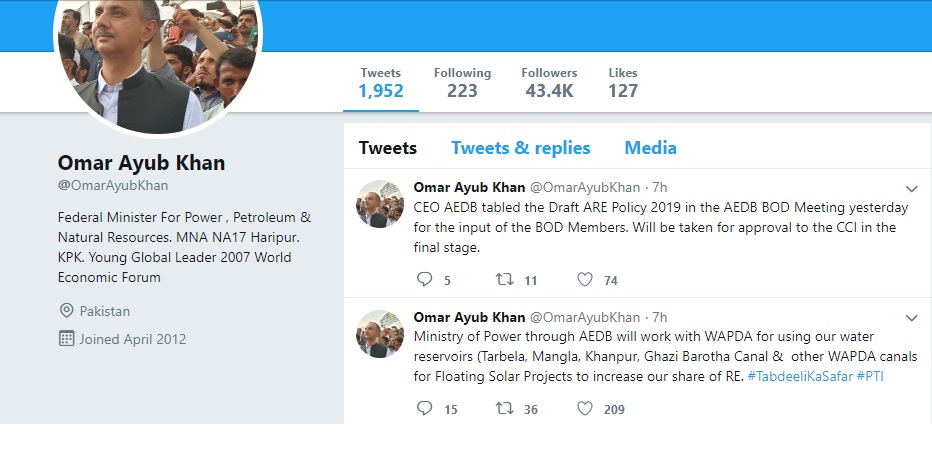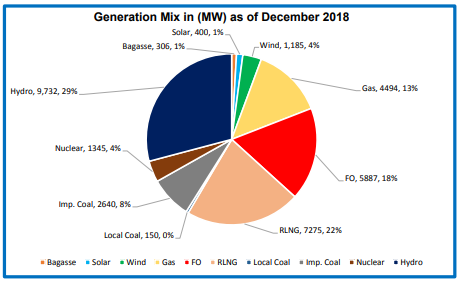Omar Ayub Khan shows interest in Floating Solar Projects for water reservoirs
Federal Minister for power & Petroleum Mr. Omar Ayub Khan tweet about Floating Solar projects and AEDB meeting.

On 13th September 2019, AEDB discussed ARE Policy, same will be taken for approval to the CCI in Final Stage, however there are few concerns of provinces.
Pakistan unveils largest ever power generation programme of over 110,000 MW
National Transmission and Despatch Company has finalized the Indicative Generation Capacity Expansion Plan (IGCEP) 2018-40 which aims at increasing the power generation capacity by 300% in the next 20 years while following Grid Code obligations.
The goal has been set to 111,000 megawatts compared to the existing 29,000 MW.
The move will ensure affordability whilst meeting rising energy demands. The plan is to add 17,300 MW capacity by 2025 and another 8,600 MW in the next five years.
The current installed capacity stands at 33,500MW, generating 153,000 Gigawatt Hour (GWh) power, with the following breakdown:
– 3,000 MW from coal-based plants – 9,700 MW from hydropower plants – 20,000 MW from thermal plants – 1,345 MW from nuclear plants – 1,900MW from renewables

The government has chalked out the plan keeping in view three different economic growth scenarios:
1. 4.5% GDP growth rate – 65,100 MW to generate 370,500 GWh
2. 5.5% GDP growth rate – 80,500 MW to generate 458,000 GWh
3. 7% GDP growth rate – 111,000 MW to generate 630,500 GWh
According to the IGCEP’s targets, 98,100 MW capacity addition will be made until 2040. The breakdown is as follows:
– 29,000 MW from hydropower plants – 20,000 MW (local) and 5,000 MW (imported) from coal-based plants – 4,300 MW from nuclear plants – 16,000 MW from renewables
From 2021-22 and onward, solar and wind power will be developed in blocks of 400 MW and 500 MW respectively.
The plan aims to gradually phase out the thermal power plants in the next 20 years. According to an estimate, 9,000 MW oil-based plants will be phased out.
1,320 MW Oracle Thar-Based plant and high annual cost projects like Chiniot, Kaigah, Tungas, Yalbo, and Basho haven’t been included in the report.
The targets have been set keeping in view the local resources including renewables and Thar coal in the South and hydro potential in the North.
According to the projected figures for 2040, 98,091 MW capacity would meet the 80,425 MW peak load demand, ensuring a significant surplus of 17,600 MW.
Source : Times of Islamabad, Twitter